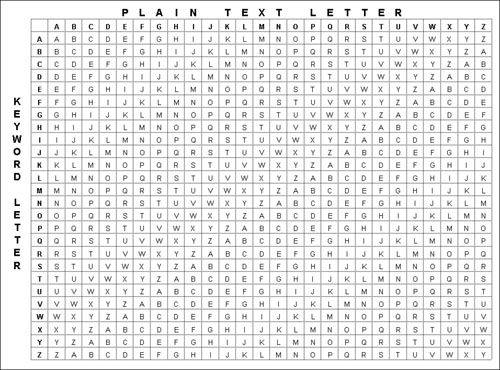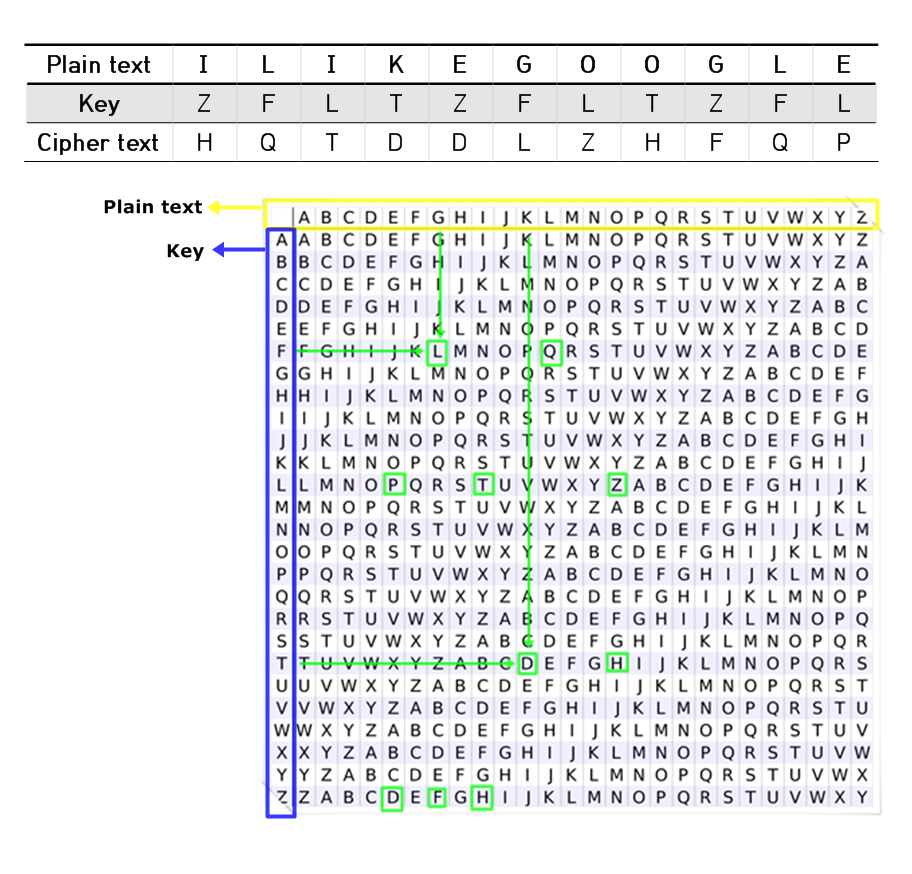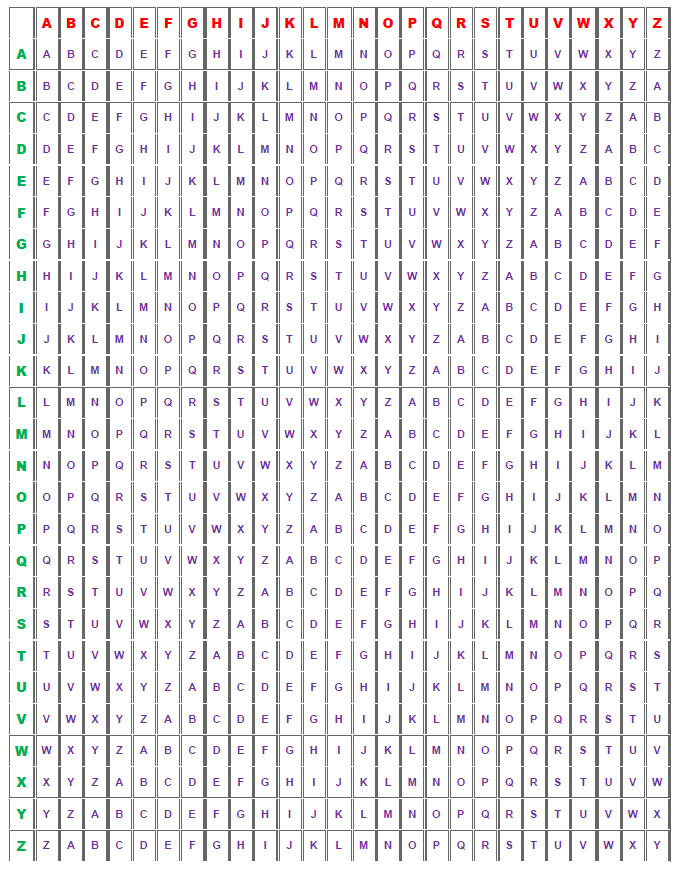


So, to decrypt N, we look along the row beginning with H and find the position of N in this row. This process is repeated with the remaining letters of the ciphertext and key until every letter of the ciphertext is decrypted.įor example: The first letter of the ciphertext, N, is paired with the first letter of the key, H. That is, beginning with the first letter of the key, find the row whose heading matches that letter, move along the row until you find the position of the first ciphertext letter in that row, and then take the letter from the heading of this column to be the plaintext letter. To decrypt the ciphertext, you must first know the key that was used to encrypt the message, and you then work backwards through the encryption procedure. This process continues until every letter in the plaintext has been encoded in this way: Repeating this with the second letter of the plaintext, O, which is paired with E from the key, we find that the second letter of the ciphertext is S (the intersection of the E -row and O -column). The intersection of the H -row and G -column gives you the first letter of the ciphertext, N. To encrypt G, look along the row beginning with H and find the column with the heading of G. Repeat this process with the remaining letters in the plaintext and key until you have encrypted every letter of the original message.įor example: The first letter of the plaintext, G, is paired with the first letter of the key, H. That is, take the first letter of the key, move down to the row whose heading matches that letter, move along that row to the column whose heading matches the first letter of the plaintext, and then take the letter at the intersection of to be the encrypted letter. Even though there are 26 rows displayed, you only use the rows which correspond to the unique letters in the key.įor example: If the message to be encrypted is " GOODMORNING " and the keyword is " HELLO " then the plaintext and key are written as follows:įor successive letters of the message, take successive letters of the key and encrypt each plaintext letter using its corresponding key row as a Caesar cipher. In the Vigenère square, each row begins with a key letter. Z Z A B C D E F G H I J K L M N O P Q S R T U V W X YĪt each point in the encryption, the cipher uses a different alphabet from one of these rows, depending on the corresponding letter of the repeated keyword.Īfter creating the original message (the "plaintext"), you must choose a keyword and repeat it until it matches the length of the plaintext (the "key"). Y Y Z A B C D E F G H I J K L M N O P Q S R T U V W X X X Y Z A B C D E F G H I J K L M N O P Q S R T U V W W W X Y Z A B C D E F G H I J K L M N O P Q S R T U V V V W X Y Z A B C D E F G H I J K L M N O P Q S R T U U U V W X Y Z A B C D E F G H I J K L M N O P Q S R T

T T U V W X Y Z A B C D E F G H I J K L M N O P Q R S S S T U V W X Y Z A B C D E F G H I J K L M N O P Q R R R S T U V W X Y Z A B C D E F G H I J K L M N O P Q Q Q R S T U V W X Y Z A B C D E F G H I J K L M N O P P P Q R S T U V W X Y Z A B C D E F G H I J K L M N O O O P Q R S T U V W X Y Z A B C D E F G H I J K L M N N N O P Q R S T U V W X Y Z A B C D E F G H I J K L M

M M N O P Q R S T U V W X Y Z A B C D E F G H I J K L L L M N O P Q R S T U V W X Y Z A B C D E F G H I J K K K L M N O P Q R S T U V W X Y Z A B C D E F G H I J J J K L M N O P Q R S T U V W X Y Z A B C D E F G H I I I J K L M N O P Q R S T U V W X Y Z A B C D E F G H H H I J K L M N O P Q R S T U V W X Y Z A B C D E F G G G H I J K L M N O P Q R S T U V W X Y Z A B C D E F To encrypt, you use a table of alphabets, known as a Vigenère table, Vigenère square, or a tabula recta, which consists of the alphabet written 26 times in different rows, with each alphabet shifted cyclically to the left compared to the one in the row above (this illustrates the 26 possible Caesar ciphers):Ī B C D E F G H I J K L M N O P Q R S T U V W X Y ZĪ A B C D E F G H I J K L M N O P Q R S T U V W X Y Zī B C D E F G H I J K L M N O P Q R S T U V W X Y Z AĬ C D E F G H I J K L M N O P Q R S T U V W X Y Z A Bĭ D E F G H I J K L M N O P Q R S T U V W X Y Z A B CĮ E F G H I J K L M N O P Q R S T U V W X Y Z A B C Dį F G H I J K L M N O P Q R S T U V W X Y Z A B C D E The Processes of Encryption and Decryption This encryption method is named after French diplomat and cryptographer Blaise de Vigenère, although it had been described centuries earlier by Italian cryptographer Giovan Battista Bellaso.
#Vigenere cipher series
The Vigenère Cipher is a simple form of polyalphabetic substitution through which alphabetic text is encrypted using a series of Caesar ciphers with different shift values based on the letters of a keyword.


 0 kommentar(er)
0 kommentar(er)
